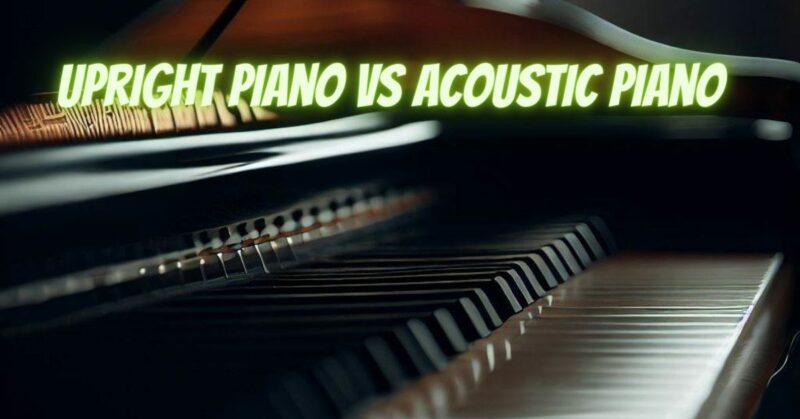When considering a piano purchase, one of the primary decisions to make is whether to opt for an upright piano or an acoustic piano. Both instruments offer unique advantages and cater to different needs. In this article, we will explore the differences between upright pianos and acoustic pianos to help you make an informed choice based on your preferences and requirements.
- Size and Space Considerations: One significant distinction between upright pianos and acoustic pianos is their size and form factor. Upright pianos have a vertical design, making them more space-efficient and suitable for smaller rooms or apartments. Acoustic pianos, on the other hand, come in various sizes, ranging from compact baby grands to concert grands, requiring more significant floor space.
- Sound Quality and Tonal Range: Acoustic pianos are renowned for their rich, resonant sound and dynamic tonal range. The strings and soundboard of an acoustic piano produce sound through the vibration and amplification of the wooden components. This results in a depth and complexity that many pianists and music enthusiasts find captivating. Upright pianos, while still capable of producing beautiful music, may not offer the same tonal richness and dynamic range due to their more compact design.
- Touch and Action: The touch and action of a piano refer to the responsiveness and feel of the keys when played. Acoustic pianos often provide a more nuanced and sensitive touch, allowing pianists to express a wider range of musical dynamics. Upright pianos, while still offering a satisfying playing experience, may have a slightly different touch and action due to their vertical design.
- Cost and Affordability: Upright pianos are generally more affordable than acoustic pianos, making them an attractive option for beginners or those on a tighter budget. The manufacturing process and materials used in upright pianos can contribute to their lower price point. Acoustic pianos, particularly high-quality grand pianos, can be more expensive due to the intricate craftsmanship and premium materials involved.
- Aesthetics and Style: The visual appeal of a piano can also be a consideration. Acoustic pianos, especially grand pianos, often serve as impressive centerpieces in a room, boasting an elegant and classic aesthetic. Upright pianos, while more compact, come in a range of styles and finishes that can complement various interior designs.
- Portability and Mobility: Upright pianos, due to their vertical design, are generally easier to move and transport compared to larger acoustic pianos. This can be advantageous if you anticipate needing to relocate the piano frequently or if you have limited space that requires occasional rearrangement.
| Feature | Upright Piano | Acoustic Piano |
|---|---|---|
| Size | Smaller | Larger |
| Price | More affordable | More expensive |
| Sound | Less projection | More projection |
| Portability | More portable | Less portable |
| Maintenance | Less maintenance required | More maintenance required |
Conclusion:
Choosing between an upright piano and an acoustic piano ultimately depends on your personal preferences, space limitations, budget, and musical aspirations. Acoustic pianos offer superior sound quality, tonal range, and touch, but come at a higher price and require more space. Upright pianos, on the other hand, provide affordability, space efficiency, and easier mobility. Consider your specific needs, playing style, and long-term goals to determine which type of piano aligns best with your musical journey.


